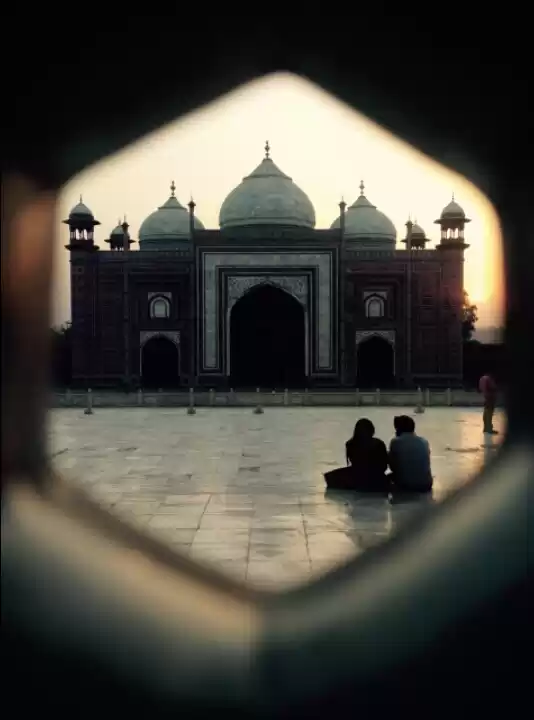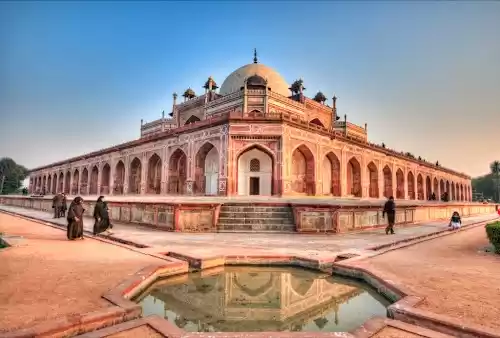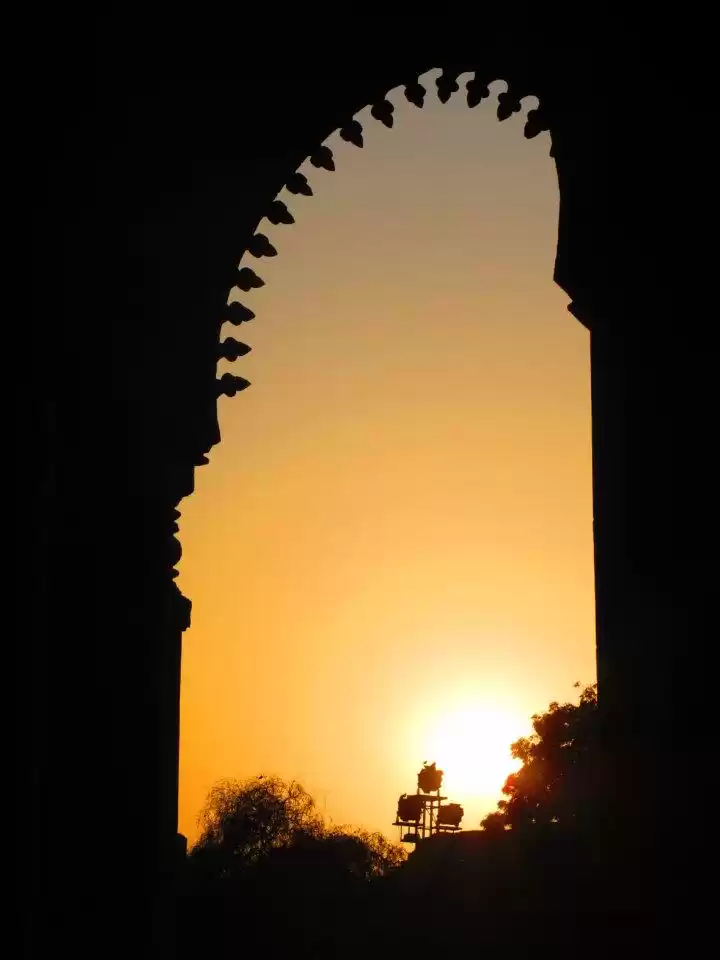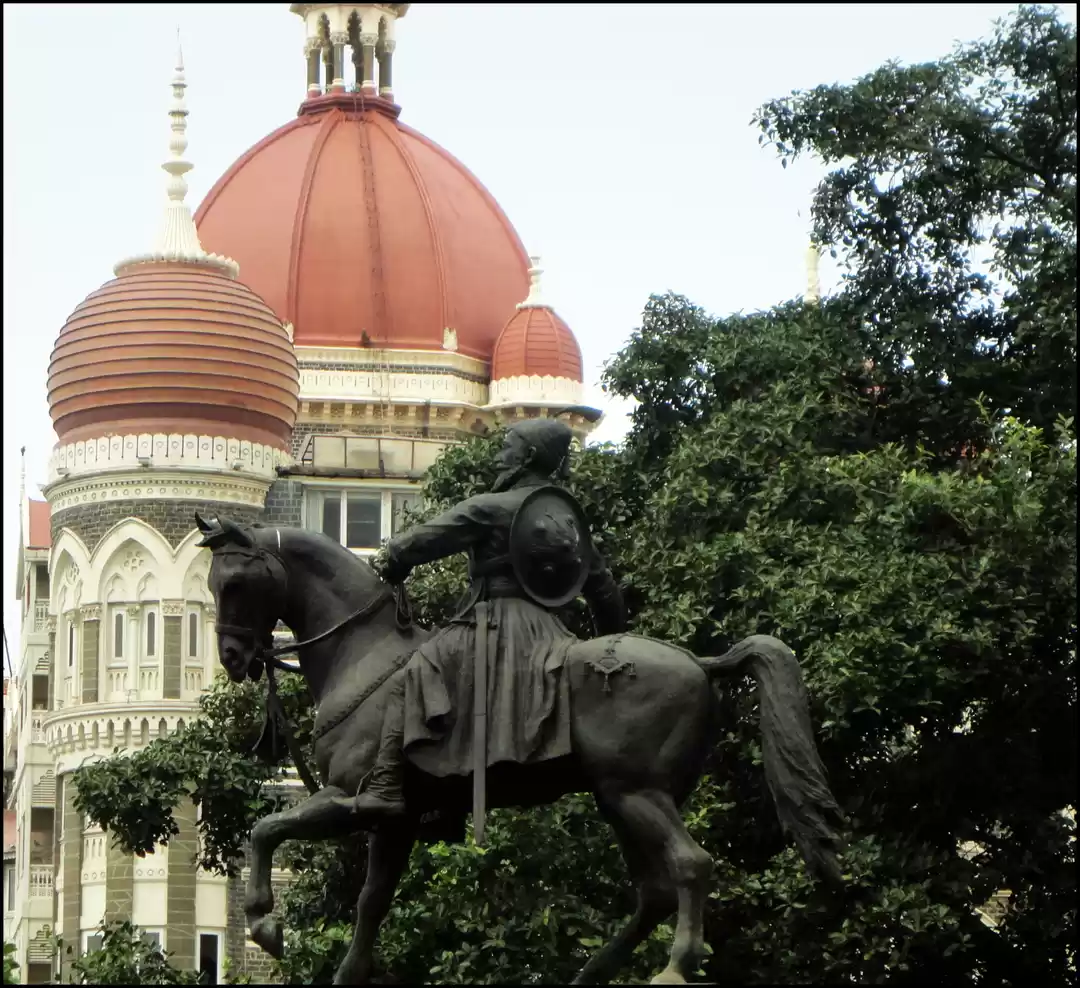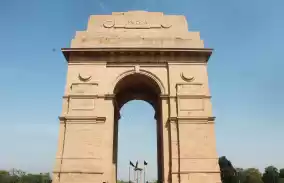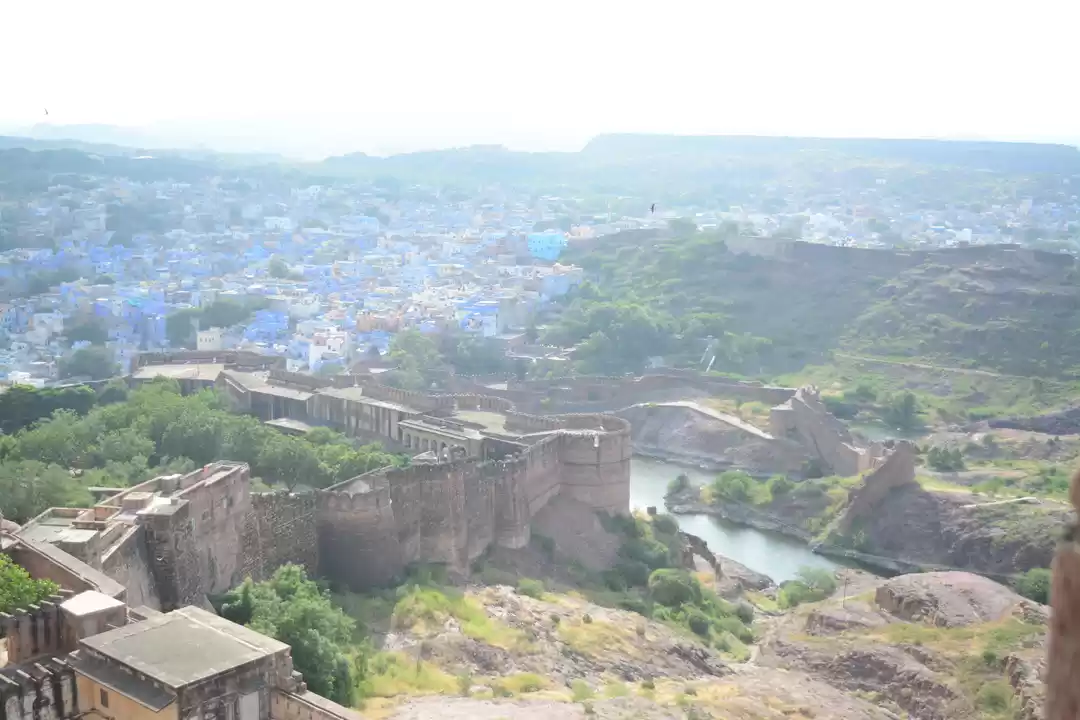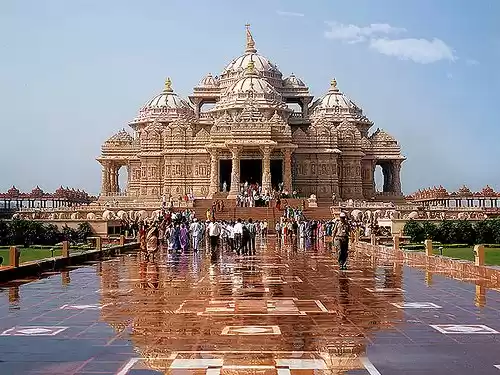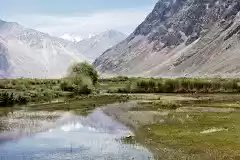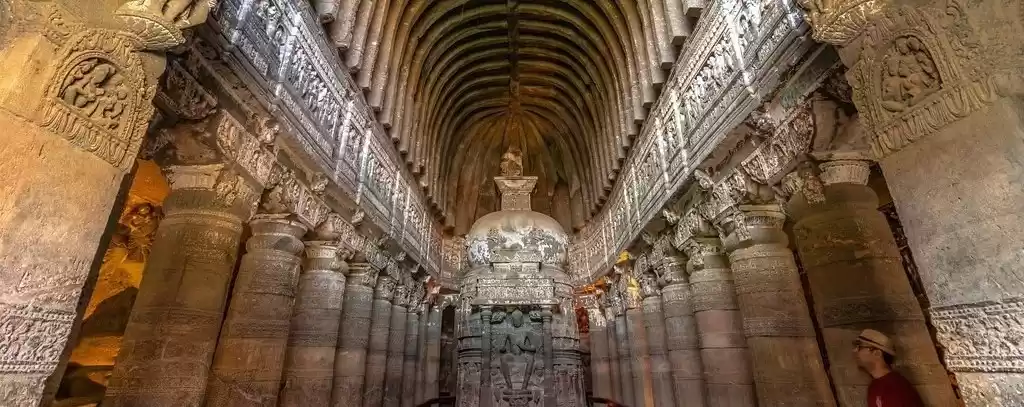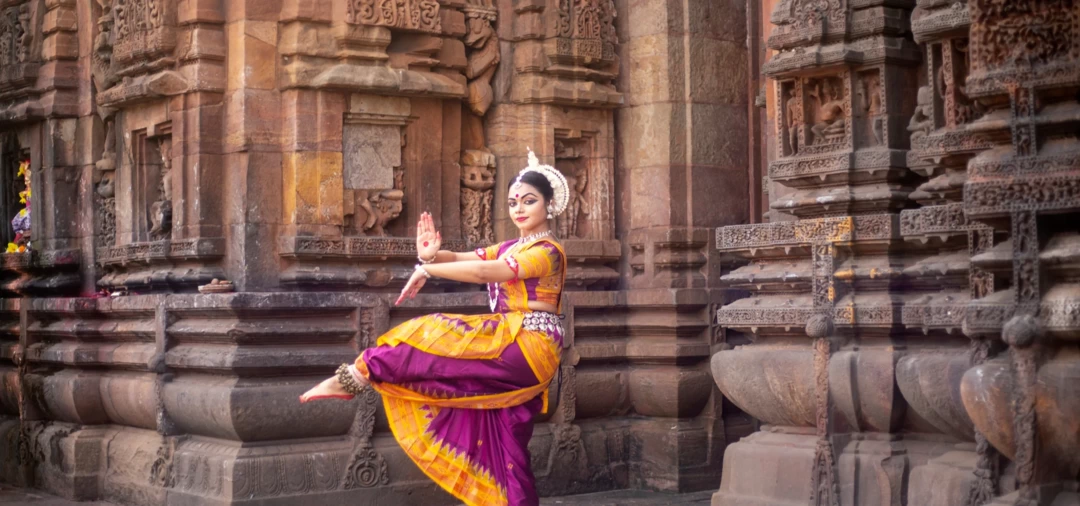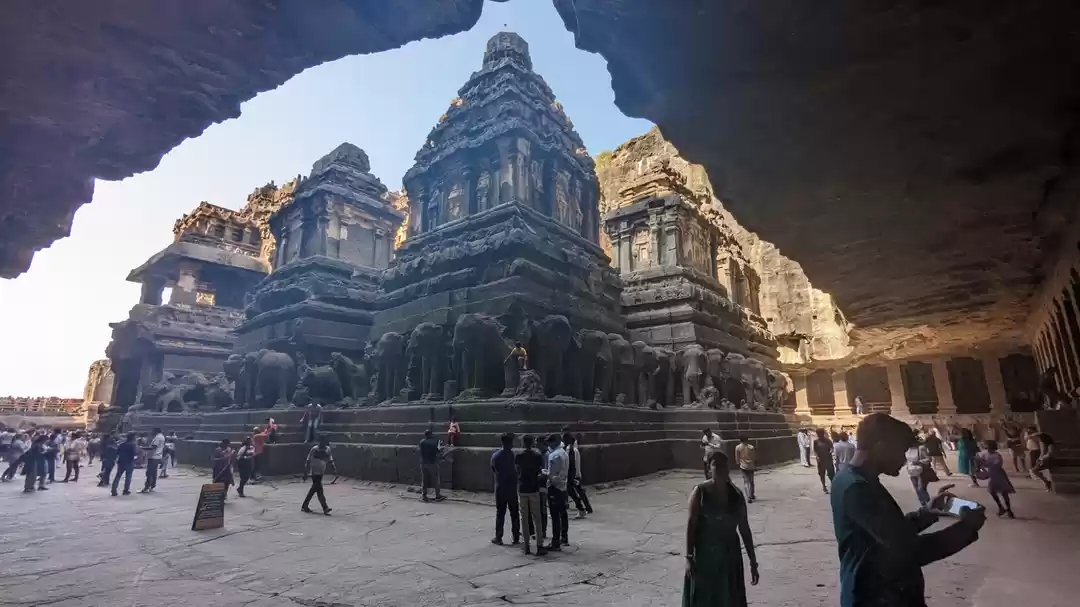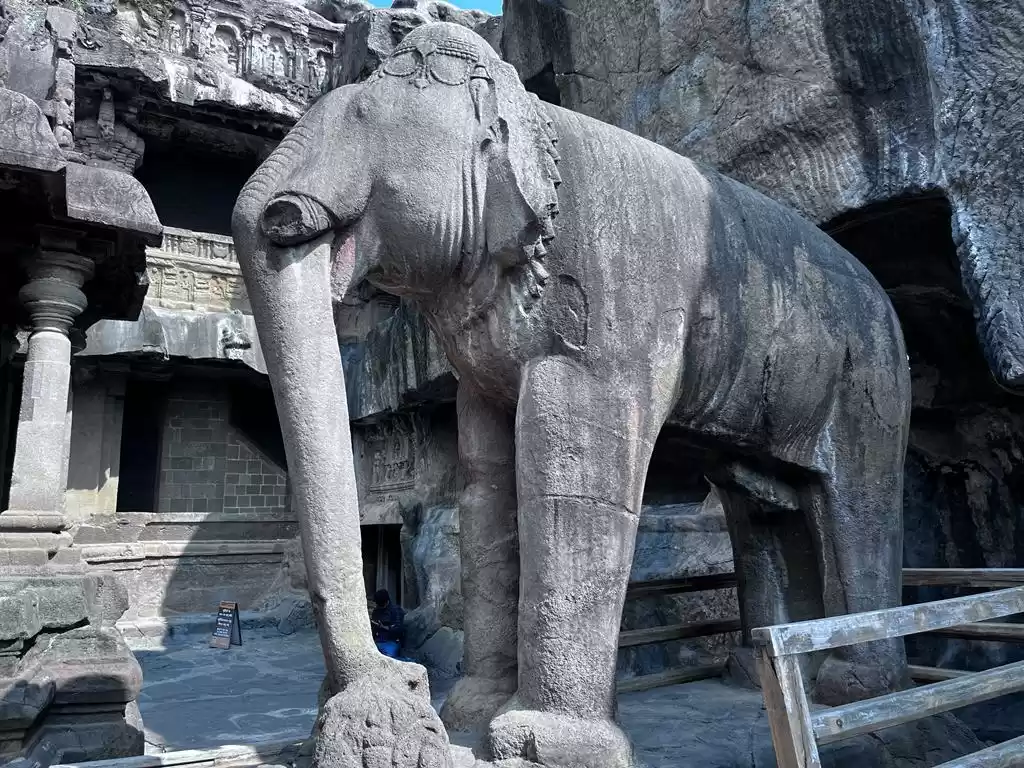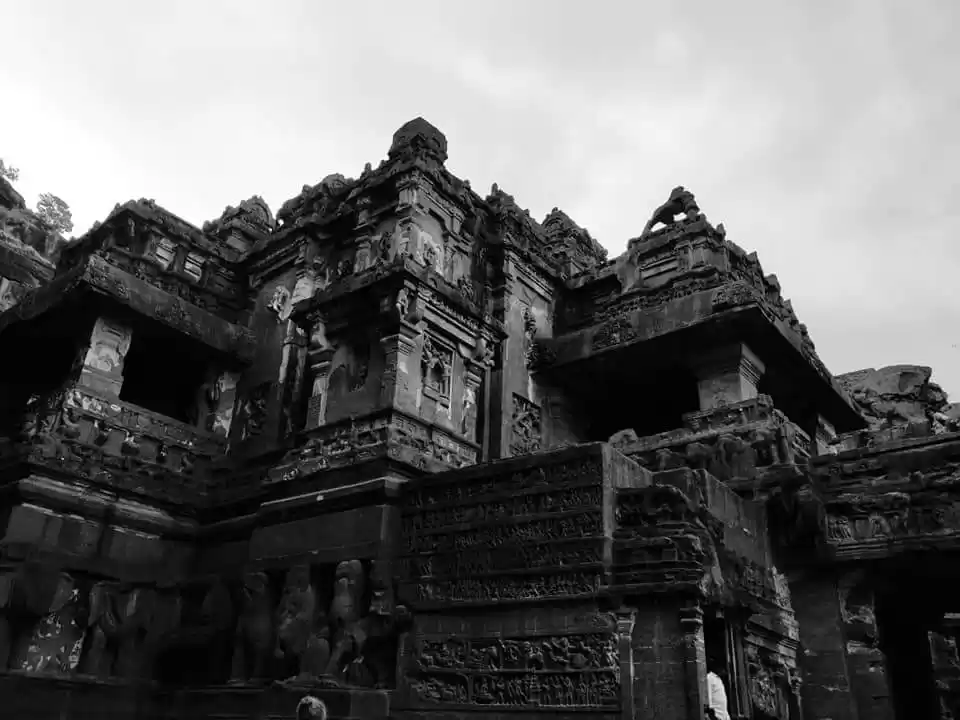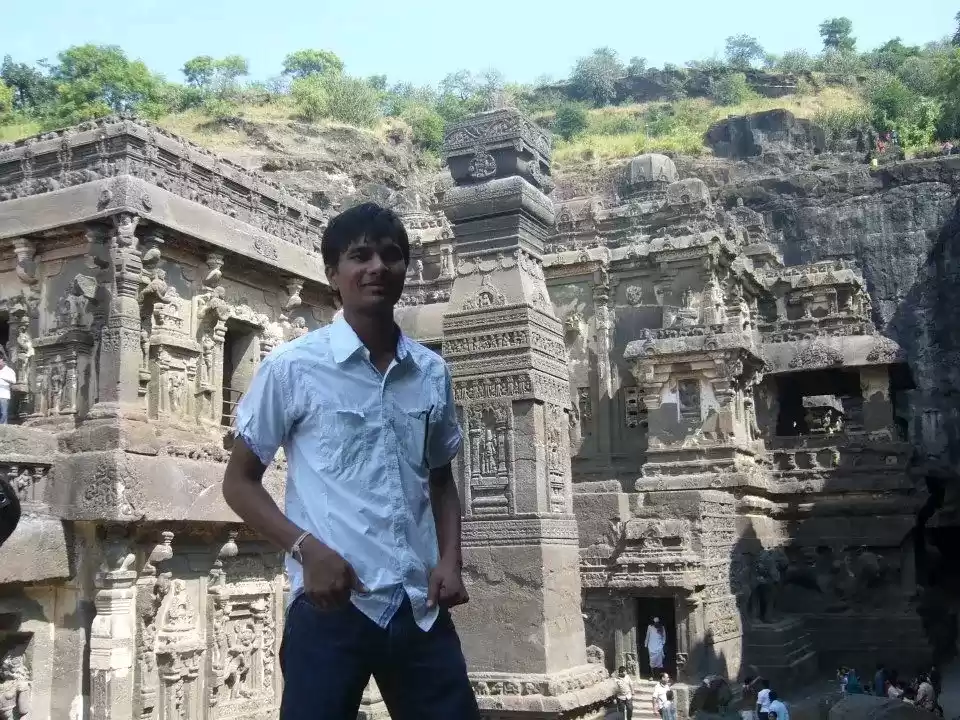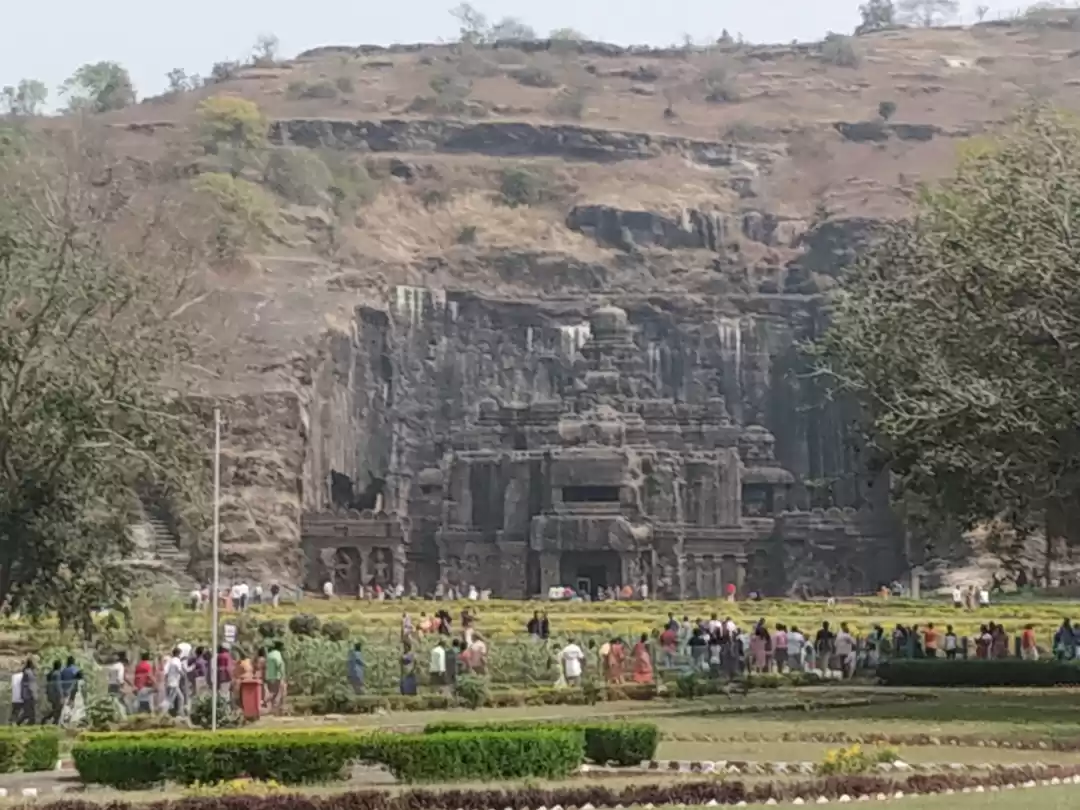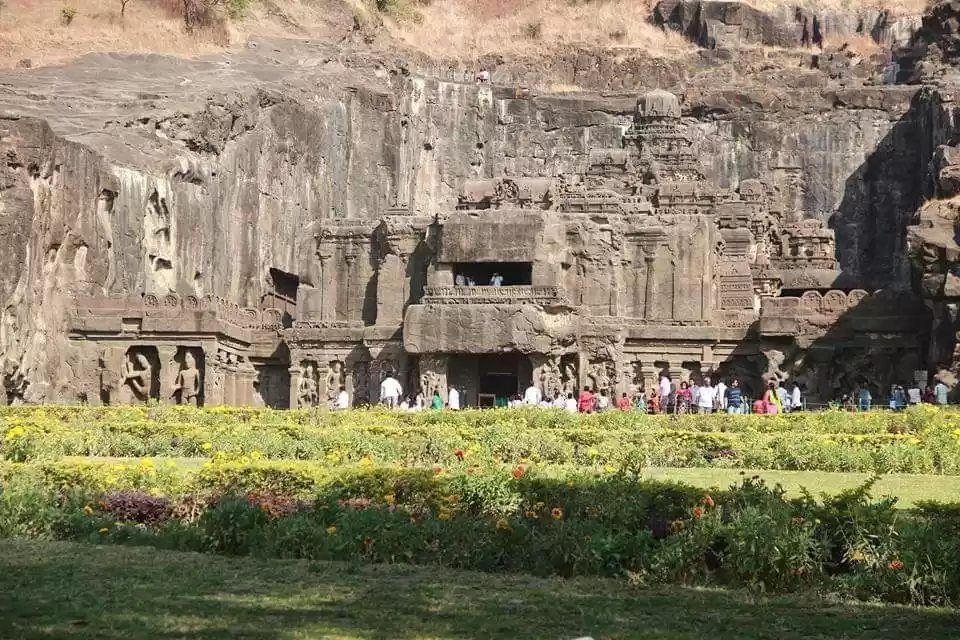Are you looking for a unique and unforgettable destination to explore the rich and diverse heritage of India? If yes, then you should definitely visit the Ellora Caves, one of the most remarkable examples of rock-cut architecture and religious diversity in the world.

The Ellora Caves are a group of 34 caves carved out of a basaltic hill in the Aurangabad district of Maharashtra, India. They are a UNESCO World Heritage Site that represents the civilization of ancient India through their uninterrupted sequence of monuments dating from A.D. 600 to 1000.
The Ellora Caves are not just caves, but temples, monasteries, shrines, and sculptures that depict the beliefs and traditions of three major religions: Buddhism, Hinduism, and Jainism. They are a testimony to the spirit of tolerance and co-existence that was characteristic of ancient India.
The Ellora Caves are also a masterpiece of artistic creation and technical innovation. They showcase the skills and imagination of their builders, who carved out intricate and elaborate structures from solid rock. The most impressive and famous among them is the Kailasa Temple, the largest and most magnificent rock-cut temple in the world.
In this article, we will take you on a journey through the Ellora Caves, and help you discover their history, architecture, significance, attractions, and preservation. We will also provide you with some useful tips and information on how to plan your trip to this amazing destination.
History of the Ellora Caves
The history of the Ellora Caves is a fascinating story of how different religious communities and cultural influences shaped the development and evolution of these monuments over four centuries.
The Ellora Caves were built between the 6th and 10th century CE by various dynasties that ruled over the Deccan region of India. The earliest caves belong to the Buddhist tradition, and were constructed by the Chalukya kings between the 6th and 8th century CE. These caves reflect the Mahayana sect of Buddhism, which emphasized the worship of Buddha and Bodhisattvas (enlightened beings).
The next phase of construction was undertaken by the Rashtrakuta kings between the 8th and 10th century CE. They built caves dedicated to the Hindu tradition, which focused on the worship of Shiva, Vishnu, and other gods and goddesses. The most remarkable achievement of this period was the Kailasa Temple (cave 16), which was commissioned by King Krishna I in the 8th century CE. This temple is a colossal structure that was carved out of a single rock mass, measuring 200 feet long, 100 feet wide, and 90 feet high.
The final phase of construction was carried out by the Kalachuri kings in the 10th century CE. They built caves devoted to the Jain tradition, which emphasized the principles of non-violence, asceticism, and liberation. These caves reflect the Digambara sect of Jainism, which practiced nudity as a symbol of renunciation.
The Ellora Caves were patronized by various kings, nobles, merchants, and monks as a place of worship, meditation, education, and art. They also served as a center of cultural exchange and interaction among different religious communities and regions.
Also Read: All You Need To Know About Ajanta and Ellora Caves, Maharashtra
Architecture of the Ellora Caves
The architecture of the Ellora Caves is a remarkable example of how different styles and techniques were used to create stunning and diverse structures from solid rock.
The Ellora Caves are divided into three groups according to their religious affiliation: Buddhist (caves 1-12), Brahmanical (caves 13-29), and Jaina (caves 30-34). Each group has its own distinctive features and attractions that reflect their respective doctrines and aesthetics.
Buddhist Group of Caves
The Buddhist group of caves consists of monasteries (viharas) and prayer halls (chaityas) that were built between the 6th and 8th century CE. These caves are characterized by simple and elegant designs that emphasize spaciousness and symmetry. The main features of these caves are:
- The large halls with pillared arcades that surround a central courtyard.
- The cells or chambers for monks that are arranged along the walls or in rows.
- The shrines or sanctuaries that house images or statues of Buddha or Bodhisattvas.
- The decorative motifs such as lotus flowers, geometric patterns, and animal figures that adorn the walls, ceilings, and pillars.
- The paintings and inscriptions that depict scenes from the life of Buddha or the history of the caves.
Some of the notable caves in this group are:
Cave 1: A large monastery with a spacious hall, a shrine with a seated Buddha, and a veranda with carved panels.
Cave 2: A similar monastery with a hall, a shrine, and a veranda, but with more elaborate carvings and paintings.
Cave 5: A huge hall with 34 pillars and 12 cells, which was probably used as a dining or assembly hall.
Cave 10: A chaitya with a vaulted roof, a stupa (a hemispherical mound), and a colossal image of Buddha in preaching pose.
Cave 12: A three-storeyed monastery with halls, shrines, cells, and staircases on each level.
Brahmanical Group of Caves
The Brahmanical group of caves consists of temples (mandapas) and shrines (lingas) that were built between the 8th and 10th century CE. These caves are characterized by complex and ornate designs that emphasize grandeur and diversity. The main features of these caves are:
- The elaborate facades with carved niches, windows, and doorways that create a sense of depth and perspective.
- The intricate sculptures and reliefs that depict various gods and goddesses, mythological scenes, and legends.
- The elaborate pillars and ceilings that display various shapes and forms, such as octagonal, circular, or square.
- The rock-cut tanks or pools that are filled with water and used for ritual purposes.
- The inscriptions and epigraphs that record the names and deeds of the patrons and builders of the caves.

Some of the notable caves in this group are:
Cave 14: A temple dedicated to Shiva, with a hall, a shrine, and a veranda. It has sculptures of Shiva in various forms, such as Nataraja (the lord of dance), Ardhanarishvara (the half-male half-female form), and Bhairava (the fierce form).
Cave 15: A similar temple dedicated to Shiva, but with more elaborate carvings and paintings. It also has a gallery with images of Vishnu and his incarnations.
Cave 16: The Kailasa Temple, the most magnificent and famous cave in Ellora. It is a freestanding structure that was carved out of a single rock mass. It has four parts: a gateway, a courtyard, a main temple, and a subsidiary shrine. It has sculptures of various deities, scenes from the Ramayana and the Mahabharata, and images of elephants, lions, and other animals. It is considered as an architectural wonder and a symbol of devotion.
Cave 21: A temple dedicated to Vishnu, with a hall, a shrine, and a veranda. It has sculptures of Vishnu in various forms, such as Varaha (the boar), Narasimha (the man-lion), and Vamana (the dwarf).
Cave 29: A temple dedicated to Shiva, with a hall, a shrine, and a porch. It has sculptures of Shiva in various forms, such as Maheshvara (the supreme lord), Gangadhara (the bearer of the Ganges river), and Andhakasura Vadha (the slayer of the demon Andhaka).
Why you must Travel Ajanta & Ellora Caves
Jaina Group of Caves
The Jaina group of caves consists of temples (basadis) and monasteries (gumpha) that were built in the 10th century CE. These caves are characterized by refined and graceful designs that emphasize serenity and purity. The main features of these caves are:
- The elegant facades with carved pillars, arches, and balconies that create a sense of harmony and balance.
- The delicate sculptures and reliefs that depict various Tirthankaras (founders or teachers of Jainism), Yakshas (guardian deities), and Yakshis (female attendants).
- The intricate pillars and ceilings that display various floral and geometric patterns.
- The paintings and inscriptions that illustrate the doctrines and principles of Jainism.
Some of the notable caves in this group are:
Cave 30: A temple dedicated to Mahavira, the 24th Tirthankara of Jainism. It has a hall, a shrine, and an open court. It has sculptures of Mahavira in sitting or standing pose, surrounded by other Tirthankaras.
Cave 32: A two-storeyed monastery with halls, shrines, cells, and staircases on each level. It has sculptures of various Tirthankaras in meditative or preaching pose.
Cave 33: A similar monastery with halls, shrines, cells, and staircases on each level. It has sculptures of various Tirthankaras in meditative or preaching pose.
Cave 34: A small shrine with a single cell and a sculpture of Mahavira in sitting pose.
Significance of the Ellora Caves
The significance of the Ellora Caves lies not only in their artistic and architectural excellence, but also in their cultural and spiritual value. The Ellora Caves are a World Heritage Site that demonstrates the Outstanding Universal Value (OUV) of the monuments based on certain criteria for selection. These criteria are:
Criterion (i): The Ellora Caves represent a unique artistic creation and a technological exploit in rock-cut architecture in India. They display the mastery and innovation of their builders, who carved out colossal and intricate structures from solid rock. They also exhibit the diversity and richness of the artistic styles and influences from various periods and regions.
Criterion (iii): The Ellora Caves bring the civilization of ancient India to life through their uninterrupted sequence of monuments dating from A.D. 600 to 1000. They reflect the political, social, and economic changes that occurred in the Deccan region during this time. They also reveal the religious beliefs and practices of different communities that co-existed in harmony.
Criterion (vi): The Ellora Caves illustrate the spirit of tolerance and co-existence that was characteristic of ancient India through their sanctuaries devoted to Buddhism, Hinduism, and Jainism. They show how different religious traditions shared a common space and respected each other’s doctrines and aesthetics. They also express the universal values of peace, compassion, and liberation that are relevant for humanity today.
The Ellora Caves are not only a source of inspiration and admiration for visitors, but also a place of learning and research for scholars and historians. They provide valuable information and insights into the history, culture, religion, art, and architecture of ancient India. They also pose various questions and challenges for their interpretation, preservation, and presentation.

Preservation of the Ellora Caves
The preservation of the Ellora Caves is a matter of utmost importance and urgency, as these monuments face various threats and challenges that endanger their integrity and authenticity. Some of these threats and challenges are:
Environmental degradation: The Ellora Caves are exposed to natural elements such as rain, wind, sun, and dust that cause erosion, weathering, cracking, and fading of the rock surfaces. They are also affected by human activities such as pollution, deforestation, quarrying, and mining that alter the landscape and damage the ecology.
Vandalism: The Ellora Caves are vulnerable to vandalism by miscreants who scribble graffiti, break sculptures, or steal artifacts from the caves. They are also subject to theft by smugglers who sell the antiquities in the black market.
Encroachment: The Ellora Caves are surrounded by encroachments by local people who build houses, shops, or temples near or on the caves. They also use the caves as storage spaces, toilets, or garbage dumps. These encroachments not only spoil the aesthetic appeal of the caves, but also pose a risk of fire or collapse.
Tourism: The Ellora Caves attract millions of tourists every year who come to admire and explore these monuments. However, tourism also poses a threat to the caves as some tourists behave irresponsibly or disrespectfully towards the caves. They touch or climb on the sculptures, litter or spit on the premises, or make noise or flash photography that disturb the ambience.
To protect and conserve the Ellora Caves from these threats and challenges, various measures are being taken by different agencies and stakeholders. Some of these measures are:
Legislation: The Ellora Caves are protected by various laws and regulations that prohibit any alteration or damage to the monuments. They are also declared as a World Heritage Site by UNESCO, which provides international recognition and support for their conservation.
Documentation: The Ellora Caves are documented by various methods such as photography, videography, mapping, surveying, etc. that record their current condition and status. They are also studied by various disciplines such as archaeology, history, art history, etc. that analyze their features and significance.
Conservation: The Ellora Caves are conserved by various techniques such as cleaning, repairing, restoring, or reinforcing the rock surfaces, sculptures, paintings, or inscriptions. They are also treated with chemicals or coatings to prevent further deterioration or damage.
Management: The Ellora Caves are managed by various authorities and committees that oversee their administration, maintenance, security, and development. They are also involved in planning, implementing, and monitoring various projects and programs for the improvement and enhancement of the caves.
Education: The Ellora Caves are used as a platform for education and awareness for various groups and audiences. They are also used as a source of inspiration and creativity for various artists and scholars. They are also used as a medium for cultural exchange and dialogue among different communities and regions.
Conclusion
The Ellora Caves are a marvel of rock-cut architecture and religious diversity in India. They are a World Heritage Site that showcases the artistic and cultural achievements of ancient India. They are also a place of learning and research that provides valuable information and insights into the history, culture, religion, art, and architecture of ancient India.
The Ellora Caves are a must-visit destination for anyone who wants to experience the beauty and diversity of India’s heritage. They are also a place of wonder and admiration for anyone who wants to witness the skills and imagination of India’s ancient builders.
If you are planning to visit the Ellora Caves, here are some useful tips and information for you:
- The best time to visit the Ellora Caves is between October and March, when the weather is pleasant and dry.
- The Ellora Caves are open from 6 am to 6 pm on all days except Tuesdays.
- The entry fee for Indian nationals is Rs. 40 per person, and for foreigners is Rs. 600 per person. Children below 15 years of age are free of charge.
- The online ticket booking facility is available on the official website of ASI
- The Ellora Caves are located about 30 km from Aurangabad city, which is well-connected by air, rail, road, or bus. You can hire a taxi, auto-rickshaw, or bus to reach the caves from the city.
- The Ellora Caves have basic facilities such as parking, toilets, drinking water, cafeteria, etc. However, there are no accommodation or locker facilities available at the caves.
- The Ellora Caves have a strict code of conduct for visitors. You should respect the sanctity and dignity of the caves. You should not touch or climb on the sculptures, litter or spit on the premises, or make noise or flash photography that disturb the ambience.
We hope this article has given you a glimpse of the Ellora Caves, and has inspired you to visit them soon. If you have any questions or feedbacks about this article or our capabilities please let us know. Thank you for using Tripoto. 😊.



























